[SOLVED] Event ID 10: A TCG Command Has Returned an Error
The TCG (Trusted Computing Group) command issue may arise if the software or hardware encryption is enabled on the drive. Moreover, the outdated firmware of the SSD drive may also cause the issue. The issue arises when the user notices the following message in the Event Viewer (in some cases, the user’s PC restarted automatically or the user encountered a BSOD):
Event ID 10: A TCG Command Has Returned an Error
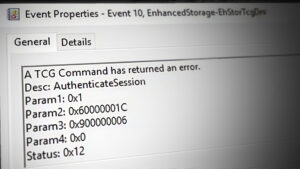
Before moving on with the solutions, check if booting your system with the bare minimums resolve the issue. Also, check if using the system in the maximum performance (not balanced) mode resolves the issue. Moreover, make sure you attempt the mentioned solutions with an administrator account.
Run the Windows Update and ‘Hardware & Devices’ Troubleshooters
The TCG command issue could be a result of a temporary glitch of the system’s hardware or Windows Update (if an update is failing to install again and again), which may get cleared by running the Windows built-in Hardware & Devices or the Windows Update Troubleshooters and thus solve the problem.
- Right-click Windows and select Run.
- Now execute the following in Run:
msdt.exe -id DeviceDiagnostic
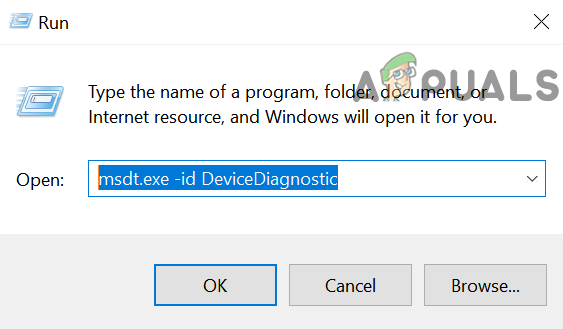
Launch the Hardware and Devices Troubleshooter Through the Run Command Box - Then in the Hardware and Devices window, click on Next and let the troubleshooter complete its course.
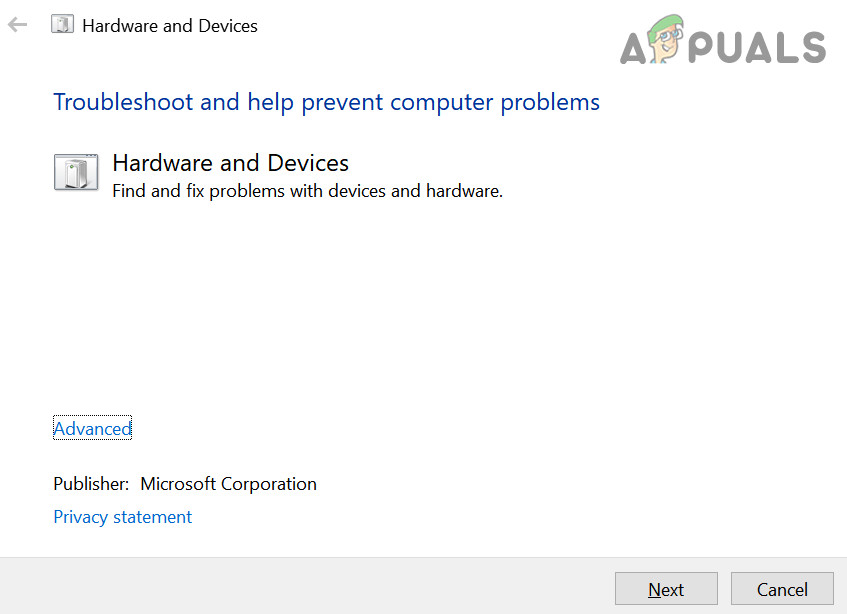
Hardware and Devices Troubleshooter - Now apply the suggestions by the troubleshooter (if any) and check if the TCG issue is resolved.
- If not, right-click Windows and open Settings.
- Now open Update & Security and steer to the Troubleshoot tab (in the left pane).
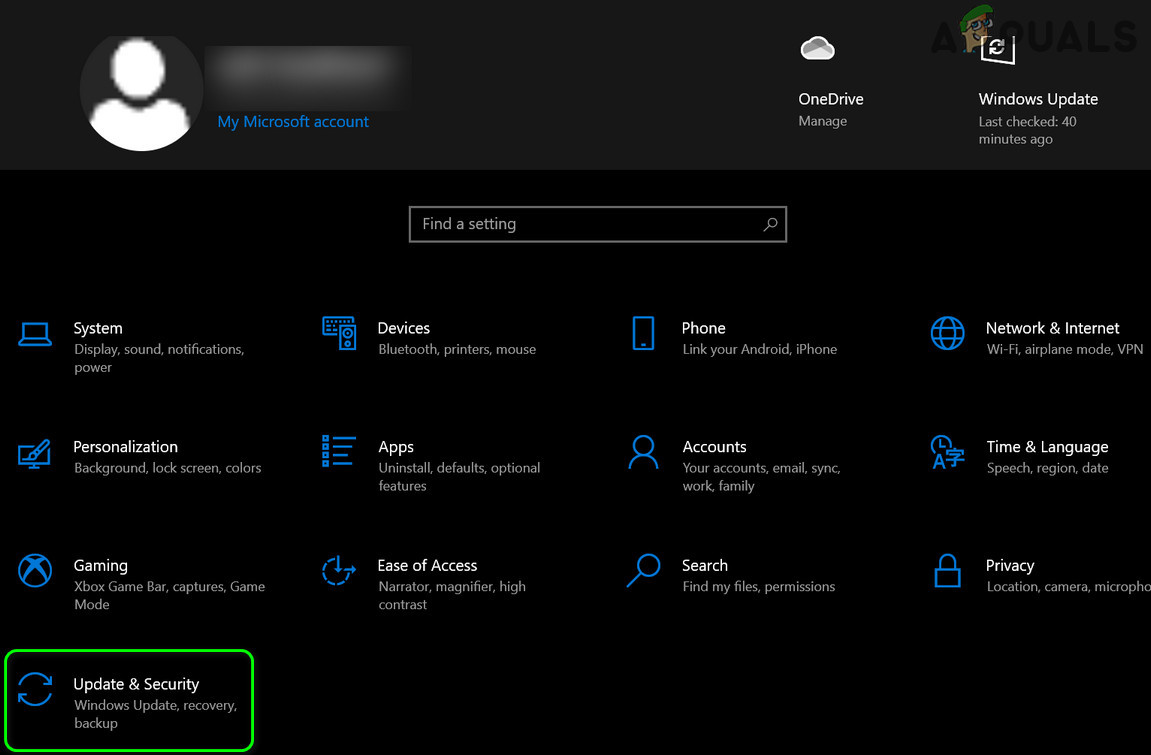
Open Update & Security - Then click on the Additional Troubleshooters (in the right pane) and click on the Windows Update to expand it.
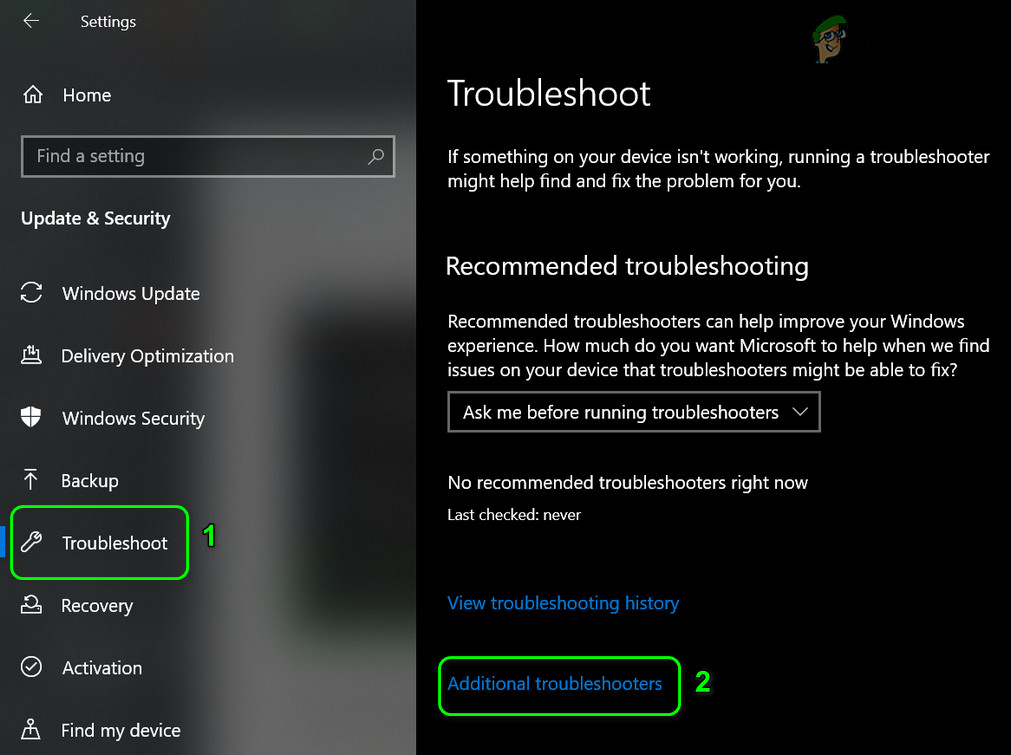
Open Additional Troubleshooters - Now click on Run the Troubleshooter and follow the prompts to complete its course.
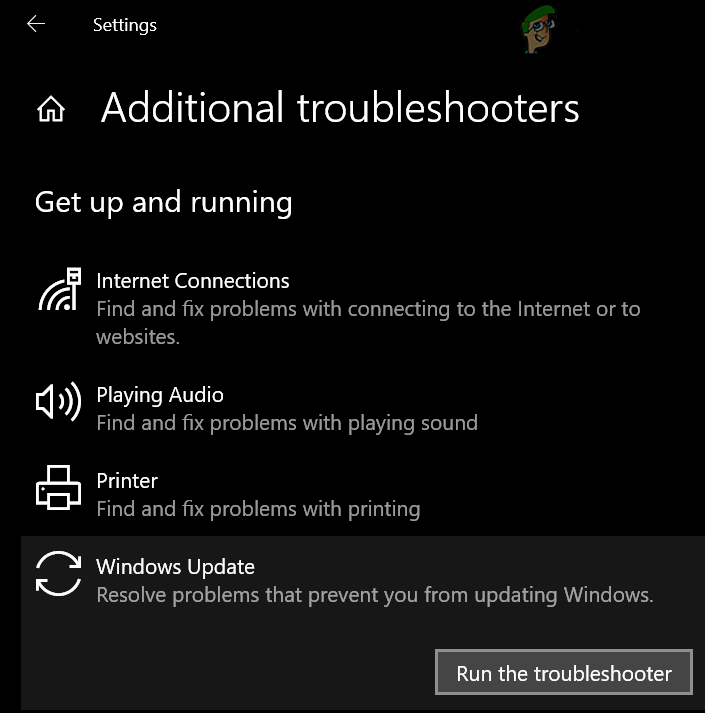
Run the Windows Update Troubleshooter - Then apply the suggestions by the Windows Update troubleshooter and check if the Event ID 10 issue is resolved.
Disable BitLocker on the Storage Drive
The TCG issue may arise if the BitLocker is enabled on the storage device (which disables unrestricted access to the storage drive). In this scenario, disabling the encryption of the drive may solve the problem.
- Click Windows, type: BitLocker, and open it.
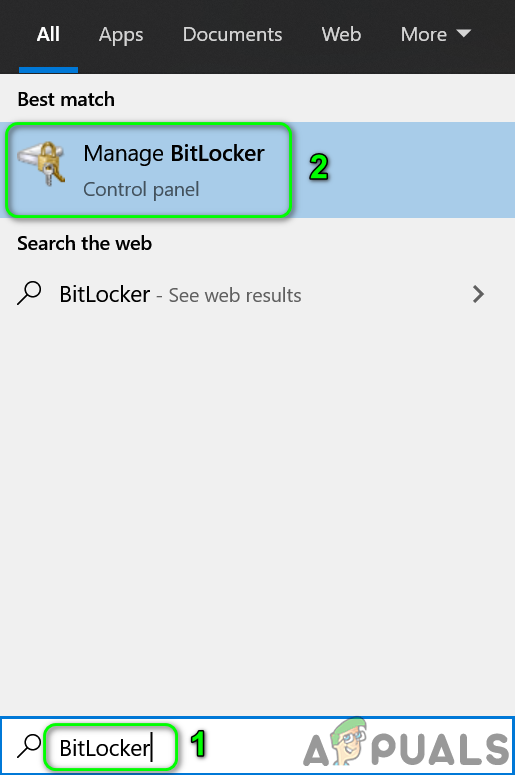
Open Manage BitLocker - Now click on Turn Off BitLocker and follow the prompts to disable the BitLocker.
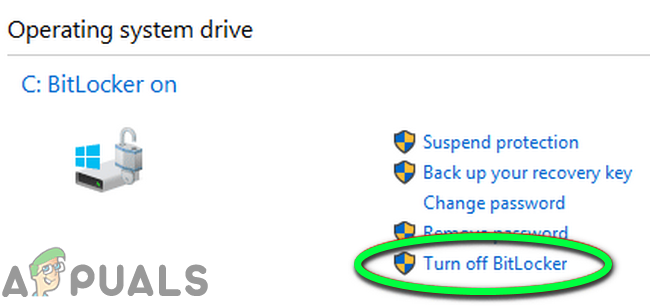
Turn Off BitLocker - Once disabled, reboot your PC and check if the TCG issue is resolved.
Update the System Drivers to the Latest Release
The TCG Command error may occur if the system’s drivers are outdated (which may create incompatibility between the OS and drivers). In this context, updating the system’s drivers to the latest release may solve the TCG Command issue.
Update Windows and System Drivers
- Update the system’s Windows (as many OEMs prefer to update drivers through the Windows Update channel) and check if the Event ID 10 issue is resolved.
- If not, update the system’s drivers (it will be better to use an OEM update utility like the Dell Support Assistant) and check if that resolves the TCG issue.
Update the Drivers of the Disk Drives
- If the issue persists, right-click Windows and select the Device Manager.
- Now expand Disk Drives and right-click on the system’s storage drive.
- Then, in the menu shown, choose Update Driver and select Search Automatically for Drivers.
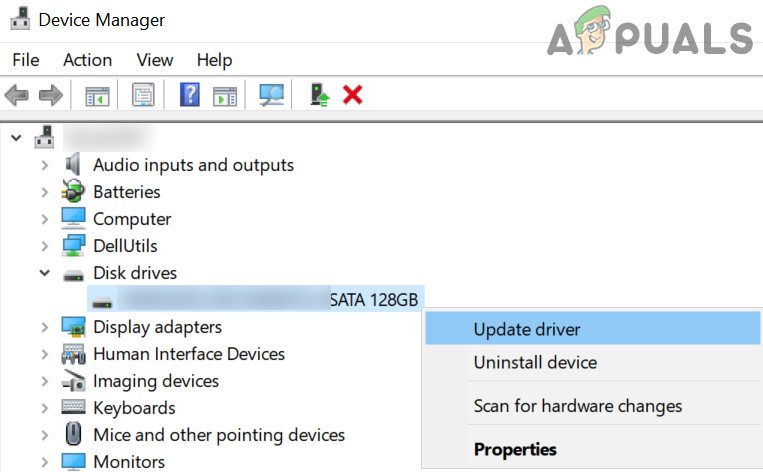
Update the Disk Drive Driver in the Device Manager - Once the driver is updated, check if the TCG issue is resolved.
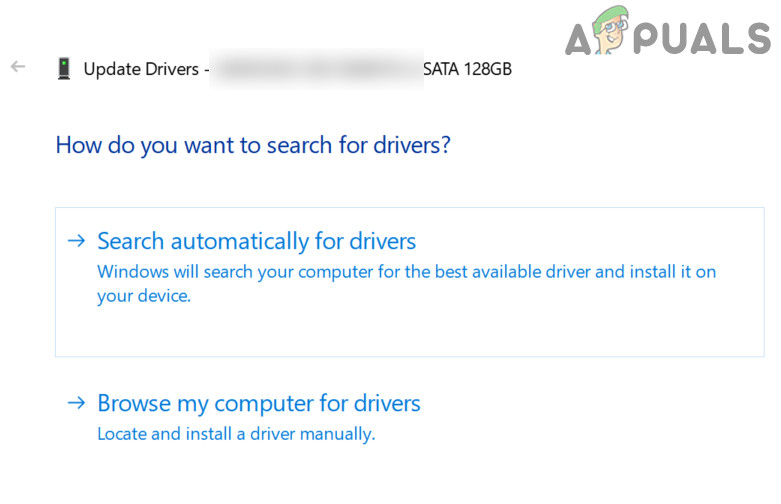
Search Automatically for the Update Disk Drive Drivers - If that did not do the trick, repeat steps 3 to 5 but at step 5, choose ‘Browse My Computer for Drivers’.
- Now select Let Me Pick from a List of Available Drivers on My Computer and in the list of drivers, choose the driver that is currently not in use (you may uncheck the option of Show Compatible Hardware).
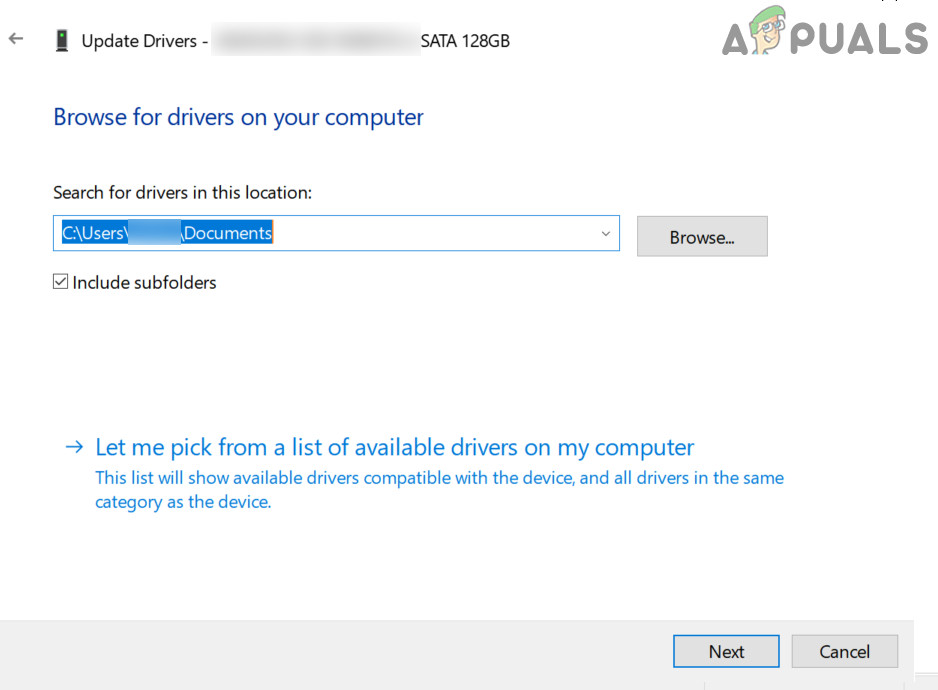
Let Me Pick from a List of Available Drivers on My Computer - Then click on the Next button and once the driver is installed, reboot your PC to check if that solves the TCG command issue.
- If the issue persists, you may try the other drivers (it will be better to use a Microsoft driver, if applicable) one by one (mentioned in step 8) to check if any of the drivers resolve the issue.
- If that did not solve the problem, then you may install the Intel(R) 9 Series Chipset Family SATA AHCI Controller (or Marvell RAID SATA/ACHI chipset driver) from the OEM website to check if that sorts out the TCG issue.
Install the Rapid Storage Technology
- Launch a web browser and steer to the download page of Intel Rapid Storage Technology (if using Intel-based hardware).
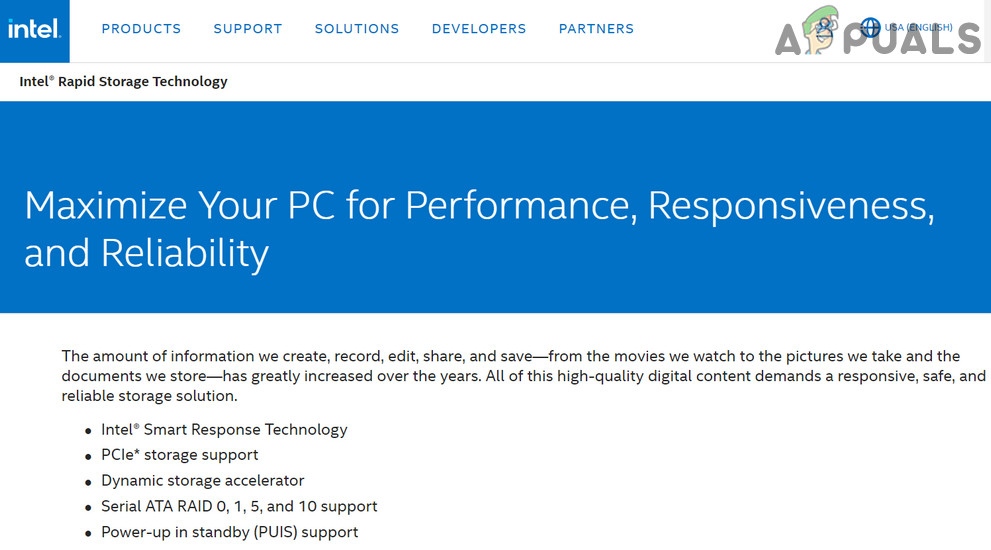
Download Intel Rapid Storage Technology - Then download the RST driver as per your OS and install it as administrator (keep in mind that installing RST may stop the hardware encryption capability of your PC).
- Now reboot your PC and upon reboot, check if the system is clear of the Event ID 10 issue.
Disable the Wireless Card in the Device Manager
- Open the Device Manager (as discussed above) and expand the Network Adapters.
- Then right-click on the network card and choose Disable Device.
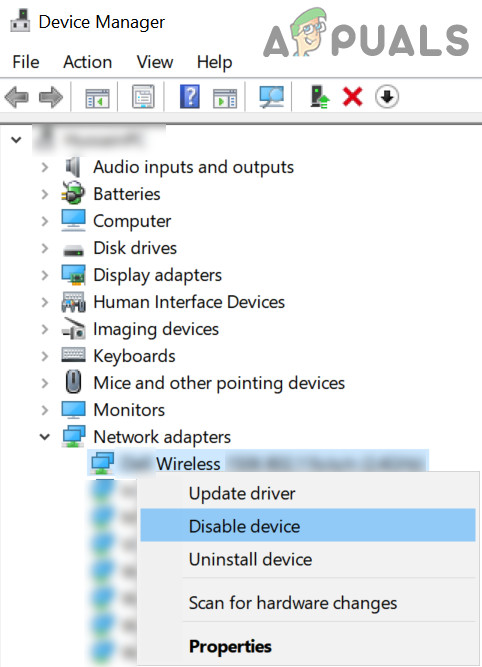
Disable the Network Card of Your System - Now confirm to disable the wireless network card and check if the TCG issue is resolved. If so, then you may update (or reinstall) the network card driver.
- If the issue is with a particular game/application, then check if updating that game sorts out the TCG error.
Update the SSD Firmware
The system may show the “TCG Command has Returned an Error” message if the firmware of the SSD (e.g., Crucial SSD) is outdated (which may make the SSD incompatible with Windows and thus cause the issue). In this context, updating the firmware of your SSD drive may solve the problem. For illustration, we will discuss the process for the Crucial SSD.
- Firstly, exit all the applications and close any opened windows.
- Then launch the Crucial Storage Executive app (if not installed, then you may download it from the Crucial website and install it as administrator) and head to the Firmware Update tab (in the left pane).
- Now, in the right pane, click on the Check for Firmware Updates and if an update is available, click on the Update Firmware Now button.
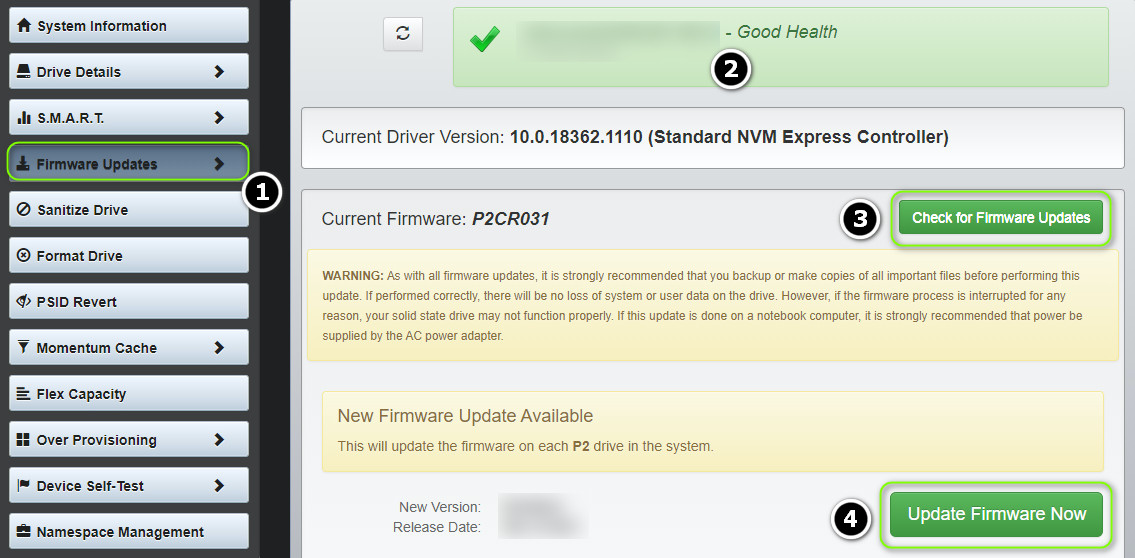
Update Firmware of the SSD - Then let the process complete (the system may reboot in the process) and once the update process is complete, check if the TCG issue is resolved.
Update the System’s BIOS to the Latest Release
The TCG command issue may arise if the system’s BIOS is outdated as it may lead to incompatibility between the essential OS modules. In this context, updating the system’s BIOS to the latest release may solve the problem.
Warning: Advance with extreme care and at your own risk as updating the system’s BIOS is a proficient task and if not done properly, you may cause everlasting damage to your PC/data.
- Update the system’s BIOS as per the manufacturer of your system:
- Once the system’s BIOS is updated, check if the system is clear of the TCG issue.
Disable Self (or Hardware) Encryption of the SSD
Many modern-day storage devices come with built-in self (or hardware) encryption (like the Crucial SSD), which may cause the TCG command issue. In this scenario, disabling the self or hardware encryption may solve the problem. For illustration, we will discuss the process for a Crucial SSD.
- Firstly, back up the essential contents of the SSD drive (as the contents of the drive will be erased, and if the drive is a system drive, then you may have to reinstall the OS afterward) to a safe place (but not on the SSD drive) and remove the SSD from the system.
- Now attach the drive to another Windows system (if another system is not available, then you may use a live bootable USB) and download/install the Crucial Storage Executive.
- Then launch the Crucial Storage Executive and in the left pane, steer to the PSID Revert.
- Afterward, in the right pane, make sure the required drive is selected.
- Now enter the PSID (physically printed on the drive) and click on the ‘Yes, Perform PSID Revert’ button.
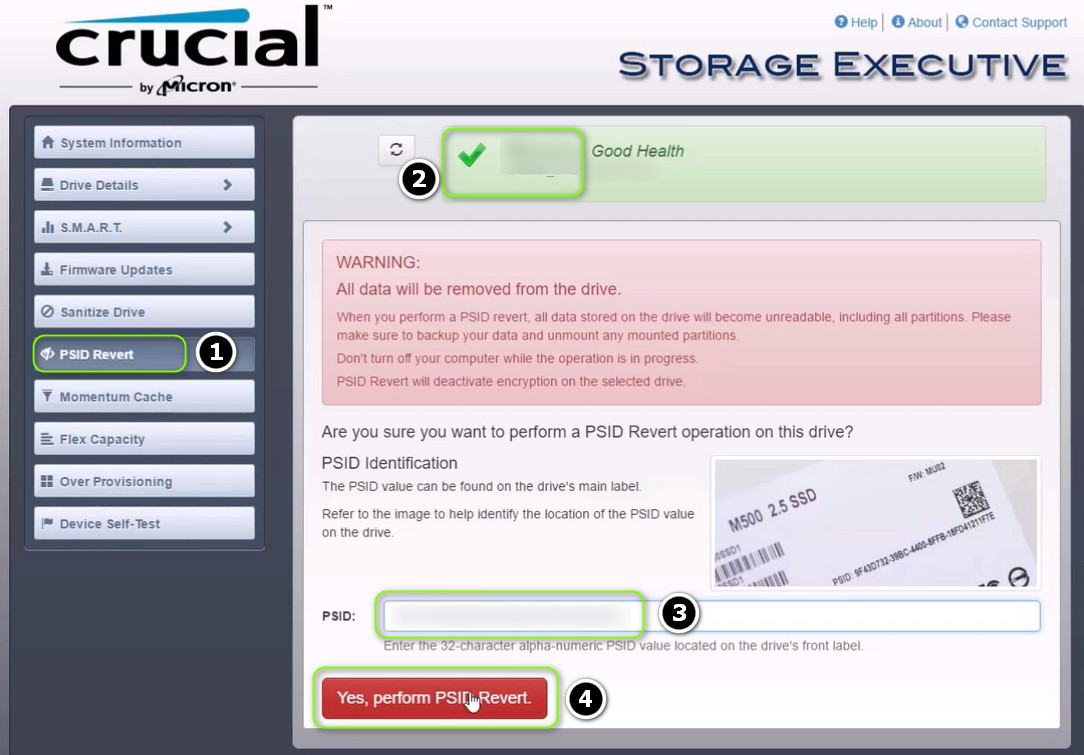
Perform the PSID Revert - Then confirm to perform PSID Revert and let the process complete.
- Once completed, attach the drive back to your system and set an ATA HDD password on the drive (must, otherwise the Windows my enable TCG Opal Mode during the reinstallation of Windows which may again cause the issue at hand)
- Then reinstall Windows and hopefully, it will resolve the TCG command issue.
If that did not do the trick, check your system for a hardware issue, especially your system’s RAM (you may try Memtest) and Graphics card.




